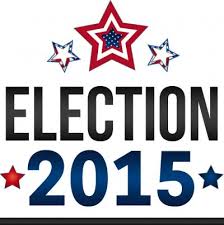by Scott Howard | Nov 1, 2016 | Marketing and Advertising Insights, ScLoHo's Media, The Not-So-Secret Writings of ScLoHo, WOWO Fort Wayne Radio Advertising with Scott Howard
Over the next 5 weeks, I am sharing the 5 most shared articles I’ve published in the past 12 months. As we prepare for the final week of the 2016 Election cycle, this look back on the 2015 election still has some truths to consider:
WOWO Radio in Fort Wayne is recovering from the November elections that we just had a week ago today. While it was an off year for Federal and state offices there were many local offices up for grabs including City Clerk, Mayor and City Council.
(I’ll tell you why I used the word recovering in a moment.) 
WOWO has been on the air at 1190 am for 90 years and News/Talk for around 20 years.
As the most listened to radio station by adults combined with the news/talk format, it’s a magnet for politicians to place ads so they can stay in office or upset an incumbent.
We are obligated to accept political advertising from the candidates official campaigns and charge them the same price. At Federated Media, all of our political advertising is handled by our station General Sales Managers. I had a candidate contact me and I passed him on to Ben, the G.S.M. for WOWO.
The reason I say recovering is we had to be very creative and work with some of our advertisers who gave us flexibility in when their ads would air to jockey around some of the ads since we have a limited number of ads we can air each week.
Some of the ads that would have aired in October for some advertisers are going to air next week, for example.
Radio ads and yard signs are two of the most popular ways politicians spend money to get elected. I saw a story last week that Donald Trump and Ted Cruz are investing in radio ads for winning primary contests.
Why? Radio works.
But what about T.V.? Let me dig into what happened in the Fort Wayne City elections last week.
Republican Mitch Harper spent money on radio and T.V. along with plenty of other medias to unseat our Democratic Mayor Tom Henry. Mitch lost.
One might expect that since the Democratic candidate for Mayor won, many voters would vote a straight ticket and elect Democrats to the other city offices. Wrong.
The 3 City Council at Large seats were won by Republicans. I bet the 3 top vote-getters are the 3 that advertised the most on WOWO Radio. And I suppose that if Republican Mitch Harper had spent more on radio ads and less on TV ads, he could have been preparing for his first term as Mayor of Fort Wayne.
You may not care about politics, but you can learn from the successes and mistakes that our politicians make during a campaign.
by Scott Howard | Oct 24, 2016 | Marketing and Advertising Insights, ScLoHo's Collective Wisdom, The Not-So-Secret Writings of ScLoHo
Do different generations consume and respond to marketing messages differently?
It’s a question that deserves examining and the big question, Is There A Generation Gap In Marketing?
On one hand, I am not typical of my generation and on the other, I fit in perfectly.
I’m a child of the 60’s and 70’s. My kids are children of the 80’s and 90’s. I sometimes forget about the generational differences because I forget either how old I really am or how young they (and their peers) really are.
As usual what often prompts these articles are a series of events that are unrelated but build on one another and this month the topic was Millennials.

Can you count the 4 generations?
My media habits have changed but so have nearly everyone’s due to technology changes.
The dominance of traditional mass media that reached huge percentages of the population at the same time is gone. The traditional mass media consisted of broadcast TV networks that you would watch without having to pay a cable or internet or data fee for (namely ABC, CBS, NBC, PBS & Fox); Local radio stations (Fort Wayne had no more than 10 and only 3 or 4 dominate stations), and the daily newspapers.
First came the internet revolution and then the smartphone revolution and now we truly live in a different world.
Instead of only being able to reach a mass audience with your message, you can also reach a very targeted audience with your message.
Instead of having to choose from two TV shows that are on at the same time on different channels, I can watch them when I want, where I want and on whatever device I want.
Forget about reading the printed newspaper. I get my news, even my local newspaper news online.
Radio for me is still a pleasure to listen to, but the number of stations I have available is now close to 30 and if I had satellite radio in my car, my choices would be in the hundreds. All new vehicles sold in the last few years have offered internet options to replace my radio and on the same token, my favorite radio stations have made themselves available for me to listen to online where ever I go.
The phone book was replaced by Google and I could go on and on, but I risk sounding like an old fogey.
I don’t want to go back to the old days. Instead I want to help people of the older generations adapt to the marketing options that are now available and at the same time, help the younger generations understand the timeless marketing principles that apply no matter what the advances are now and in the future with advertising delivery methods.
At one of the meetings I was at that inspired this article, there was a young man who was a little too passionate about digital media and overselling it to the detriment of traditional media. Because I work in both, I plan on meeting with him to see what’s what. I hope to expand his thinking, not to sell him on the traditional media, but to help him understand the limitations of all media and R.O.I. measurement.
It is true that there is a Generation Gap in Marketing. Take a look at some numbers from a report I read about Small and Medium Business marketing:
In order to better understand SMBs current marketing strategies, Magisto surveyed 500 U.S. based small and medium sized businesses about their digital/mobile marketing strategies and tactics. Key findings in the report continue.
-
Millennials spend 58% of their marketing budget on digital media; Baby boomers spend only 14% of their marketing budget on digital media, making millennials 3X more likely than baby boomers to spend the majority of their media budget on digital advertising
-
Nearly half 41% of millennials spend the bulk of their marketing budget on mobile media. Less than 10% of baby boomers rely on the same media
and from that same report:
According to eMarketer, 2017 will be the first year in history that digital media ad spending surpasses television ad spending.
When I was in my late 20’s and 30’s the marketing world was also changing and everyone of us, no matter what our generation or age, need to be fully aware of how these changes can impact your business.
Want help figuring all this out? Contact me.
by Scott Howard | Oct 17, 2016 | Marketing and Advertising Insights, The Not-So-Secret Writings of ScLoHo

30 years ago I began my adventure into the world of advertising and marketing. I took a job in Detroit creating campaigns for radio advertising clients.
I’ve spoken to 100’s of business owners, managers,and entrepreneurs. I’ve interviewed the customers, clients, front-line workers and support staff. And I’m still learning.
My definition of marketing is everything that presents you and your business to your “marketplace”. Your “marketplace” includes your current, past and future customers and clients. It also includes influencers who may not buy from you, but they have the power to influence those that will.
Number 1: You have to get your entire business moving in the same direction to create harmony and forward momentum. Think Big Picture. Really BIG PICTURE. All of your employees need to know what the mission is and that each one of them is responsible for contributing.
Number 2: You need to create a long term identity that will define who you are in all economic climates. This identity, also called your Brand, will not change over time, it will only be adapted.
Number 3: Your brand and your mission will be known by your customers and clients. If you are unsure what your brand is, perhaps you need to ask your customers and see if you are both on the same page.
Number 4: You need your own website. Not a Facebook page, you need something that you control. In 2016 if you don’t have your own website, you don’t exist as a legitimate business.
Number 5: You need a presence on Facebook. This is not a contradiction of number 4. Social Media is a communication tool. Your website is to show that you are real. Odds are Social Media will be just as important as your website, but for a different reason. Think of it this way. A retail store is like a website. Social Media is like a phone number. See the link?
And Number 6: You will need to optimize your website for mobile. More people access the web via smartphones than laptops. This means smaller screens and if you have not created a mobile version of your online presence you will eventually be behind your competitors.
Do you agree with my list of 6? Are there others you would add?
By the way, I originally wrote this in 2011, except for a couple of date references, this list has been timeless.
by Scott Howard | Oct 10, 2016 | Marketing and Advertising Insights, The Not-So-Secret Writings of ScLoHo, WOWO Fort Wayne Radio Advertising with Scott Howard
I confess. sometimes it’s hard to explain what I do. I am in a BNI Chapter and every week we have 45 seconds to stand up and tell the guests and members who we are, what we do and who we would like to connect with as a referral.
How explainable is your work?
If you are a realtor, you buy and sell houses.
If you are a dentist, you take care of peoples teeth.
If you are an engineer, well, I have no idea what you do except it’s important.
When you are marketing your business, you and I need to be able to communicate to others what we do and sometimes it can’t be done easily.
But just because it isn’t easy to explain your work, doesn’t mean all is lost.
Perhaps the big picture of what you do combined with a personal uniqueness is the key.
Like, “I’m the dentist who loves kids so much we just had our 7th baby”. I have an advertising partner that has a bunch, maybe only 5 or 6. But that sure makes an impression right?
I went through this exercise several years ago with a realtor and found out that of the THOUSANDS of Real Estate Agents in our area, she was the 2nd best or 3rd best in several categories so we had to dig deeper and find out why her clients liked her and we came up with an easy way to explain her work when we were done.
By the way, my simple way of explaining my work is, “I help businesses invite people to become their customers.” I still need to tweak that some more because the long version is about 5 minutes. I shared it the other day, but if you missed it, click here.
Another by the way… When I am helping someone determine how to explain their work, for advertising and marketing purposes, it helps me to determine which advertising options are needed and will be most effective.
Will a 60 second live endorsement ad on WOWO Radio be the most effective because we need time to explain a bit about your business?
Or…
Do we simply need to drive people to your website with shorter messages that with more frequency?
Or…
Do we need to reach people online with a Custom Audience Targeted Digital Display Campaign?
Or…
Do should we do an email campaign, or a contest, or a combination of all of the above plus a few other options?
It’s all part of determining what you really need and it begins with the ability to explain your work in such a manner that it motivates people to want to know more and then spend money with you.
Want help? Contact me.
by Scott Howard | Oct 3, 2016 | Marketing and Advertising Insights, The Not-So-Secret Writings of ScLoHo
The basics of advertising are pretty simple. It’s all about Reach and Frequency and some people will include the Message and Target.
Here’s how that formula works:
If you reach enough of the right target people with enough frequency with the right message your advertising will work and you’ll be rolling in the dough!
With this in mind, most advertising salespeople will put together a schedule of ads that will be seen or heard by a lot of people who could be your customers if the message is compelling.
There is nothing wrong with the basics. You can apply it to any form of advertising. But the advertising you spend money on is only partially responsible for the success of your business. That’s why we’re going to go Beyond The Advertising Basics and share The ScLoHo Process. 
I look at the big marketing picture and your paid advertising is just a portion of that.
Marketing includes many different elements that add up to how you and your company are perceived by the public.
Every time a person thinks about you/your company, an impression is being made, either positive, negative, or somewhere in between.
These impressions add up to create the overall image of you/your company.
What causes a person to think about you/your company?
- A conversation about a competitor of you/your company.
- An overheard remark about you/your company, or your competitor.
- Online via social media, or research activity about you/your company, or your competitor.
- Advertising for you/your company, or your competitor.
- A hands-on experience with you/your company, or your competitor.
- Other sensory experiences that trigger a thought about you/your company, or your competitor. (The aroma of freshly brewed coffee, the sound of an ambulance, the touch of a little child’s sticky hands).
Okay, let’s get down to the nitty gritty. There are internal and external elements to your marketing.
Let’s start with the internal:
- First customer contact:
- Telephone? How is the phone answered? What is the mood and tone of voice of the person answering? Is it inviting and welcoming or does the person answering sound rushed, bothered, or unfriendly.
- Same concepts for your walk in traffic. What are the impressions you and your staff project to your clients and potential clients? What improvements need to be made?
- Follow up and service. Is there anything lacking? Nearly everyone and every business have at least one area that could use improvement. Find out what could be improved with you/your company.
- Ask, and work to improve, instead of making excuses. There is a bit of truth in every complaint. Also find out what people are not complaining about.
External marketing. This is often what we call advertising. Questions to ask:
- Is it consistent? Do you present a uniform picture to the public of what you are about and why they should do business with you? (The opposite is a scattered, all things to all people, confusing, and blurry image for you/your company).
- Are you using the most effective mediums to leverage your time and resources?
- Who are your most likely customers? Are you inviting them to use you? How are you doing it?
- There are strengths and weaknesses of Radio, TV, Billboards, Internet, Newspapers, Direct Mail, Magazines, and each one of these are effective for the right business, when matched up properly with realistic goals and objectives.
- Networking is one way to get the word out about you/your company, if you understand what it can and cannot do. Give the people you network with the information so they will:
- want to recommend you to others (EMOTIONS)
- understand why to recommend you to others (FACTS)
You/your company, does not operate in a vacuum. Consumers need to know why they should buy from you/your company instead of your competition.
EVERYONE HAS COMPETITION. I want to know why I should give YOU my money instead of spending it on something else or somewhere else.
Too many businesses fail because they fail to recognize this principle.
And finally: Understand that your marketing and advertising needs to be designed to BUILD RELATIONSHIPS with current and future customers.
Building relationships take time and exposure. People want to feel good when they spend their money and it is a combination of facts and emotion that produces that good feeling. The more personal a message is, the easier it is to build that relationship.
This ScLoHo Process of going Beyond The Advertising Basics is my favorite way to work because it is a complete, big picture way of making sure you and your business are growing. It’s not easy and not everyone I work with are willing to dig deep and go beyond those basics I mentioned.
I can work with you either way. But now you are getting a peek at what is available if you are willing to go full in with the ScLoHo Process.
by Scott Howard | Sep 29, 2016 | Marketing and Advertising Insights, The Not-So-Secret Writings of ScLoHo, WOWO Fort Wayne Radio Advertising with Scott Howard
Last time I talked about the ScLoHo Advertising Process with the First Step: Who are You?
I met last week with a gentleman who started his own company less than a year ago and is still in the process of figuring that out because he is trying to match what he wants to do with what people will pay him to do that is profitable and at the same time look towards the future with what he wants to be doing in 5 years.
It’s tough at first, but everyone who is starting a business goes through it and as the years pass, you will continue to change and tweak. 
Today, I’m going to jump forward and dig deeper into the WHO are YOU?
As I help you formulate an advertising and marketing plan there are certain key considerations that will determine what is important and what you should and shouldn’t invest your money on.
First Question: Are you open year round? Most businesses are. The heating and cooling company, the doctors and dentists, the retail stores, they are open 12 months a year. They have seasons, and slow times but they are still open for business.
If the answer to Are you open year round? is yes, then you need a 12 month plan. Every single month you should be visible and inviting people to spend money with you.
Not every business is open year round. Some businesses are strictly seasonal. The Halloween stores that pop up in September but will be gone in November are one example. The guy with the Christmas tree lot set up near Jefferson and Illinois roads in Fort Wayne won’t be selling trees in January, but he’ll be back next year. These are definitely not year round businesses but they are open each year for a period of time.
Seasonal businesses should not spend money advertising during their off season, after their season is over.
Which brings me to a 3rd category.
Event Oriented Businesses.
An example that I work with is the Fort Wayne Philharmonic. They are one of the finest musical entertainment organizations I’ve ever seen and they are one of Fort Wayne’s treasures. You can buy one of a combination of season ticket packages or you can buy tickets to individual concerts. While it would make sense on one hand to advertise year round, every week, a better investment of their limited advertising funds is to promote individual concerts, which is what we do. Event Oriented Businesses need a different advertising strategy than Year Round Business.
If you are not having these kinds of conversations with the people who help you with your advertising and marketing then you may only be a “customer”, not an advertising partner in their eyes.
Sadly, I know some professional advertising salespeople in town who only know how to sell, but not dig deep and help figure this stuff out.
Recently I met with a friend who spent $2000 to promote an event and she wasted about $1500 of her budget on a TV campaign. We asked people who attended her event how they heard about it and when I was with her, no one said they saw the TV ads. She asked me if WOWO radio would have been the better advertising choice and my first response was no. Based on the conversations we had with people who attended her event, she needed to invest more in online marketing solutions and, well, we’ll dig deeper soon so I can help her plan for next year.
Want help digging deep? Ask me.






